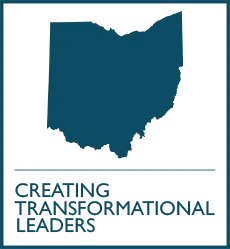Criminal Justice
Sequential Intercept Mapping
What is sequential Intercept Mapping?
Sequential Intercept Mapping is a cross-system approach to strengthening local strategies to implement core services that will address behavioral health, criminogenic, and social factors for justice-involved persons with mental illness. The goals are to aid communities in developing effective systems of care that bridge criminal justice and mental health services and minimize criminal justice involvement for persons with mental illness. Sequential Intercept Mapping promotes stakeholder collaboration by tying existing efforts together from pre-arrest through re-entry; identifying strengths and gaps; addressing issues relevant across all intercepts (e.g., culture, gender, trauma, and needs of veterans) and identifying solutions, many of which do not add costs.
Within the 1.5 days workshop, trained facilitators provide information and resources on a framework for addressing risks and needs of justice involved adults with behavioral health needs. Opportunities and resources are identified for diverting and linking people to treatment, and gaps in services are summarized. Facilitators provide examples of successful systems integration, promising and research based practices within Ohio and around the U.S., and a local map is created using the Sequential Intercept Model. Participants identify areas where immediate steps will promote improved service delivery, and a local set of priorities for change are developed, resulting in a mapping report and Acton Plan for Change for implementation.
Aggregate Priority Data
During Day 1 of the workshop, opportunities and gaps in services are summarized and participants are able to identify a local set of top priorities. On Day 2, participants break into small groups to address these top priorities by creating an action plan for change. After each Sequential Intercept Mapping workshop, the top priorities are charted on an aggregate graph. These graphs are utilized to inform stakeholders on top trends throughout Ohio.
Adult Mental Health & Criminal Justice
The Criminal Justice Coordinating Center of Excellence has facilitated mapping in 30 communities. The aggregate priority graph can be viewed below.
Download the Top Priority Graph*
Juvenile Mental Health & Juvenile Justice
The Criminal Justice Coordinating Center of Excellence has facilitated mapping in 2 communities. The aggregate priority graph can be viewed below.
Download the Top Priority Graph*
Opioid/Substance Use & Criminal Justice
The Criminal Justice Coordinating Center of Excellence has facilitated mapping in 11 communities. The aggregate priority graph can be viewed below.
Sequential Intercept Mapping County Reports
Each participating county receives a written summary report containing information gathered during the workshop, the local systems map, action plans for five top priority items, and additional recommendations.
Adult Mental Health & Criminal Justice
Athens County* – May 2017
Butler County* – December 2014
Champaign County* – May 2019
Clermont County* – November 2013
Cuyahoga County* – August 2017
Delaware County* – May 2016
Erie County* – June 2019
Fairfield County* – May 2018
Franklin County* – March 2018
Gallia County* – November 2015
Guernsey County* – May 2019
Hancock County* – March 2017
Lorain County* – April 2017
Lorain County* – June 2022
Lucas County* – March 2014
Mahoning County* – September 2016
Marion County*-November 2021
Mercer County* – June 2017
Miami County* – Map and Action Plans (Report Pending) – December 2019
Montgomery County* – November 2019
Ottawa County* – April 2019
Perry County* – October 2019
Portage County* – November 2014
Ross County* – October 2018
Sandusky County* – October 2013
Shelby County* – December 2014
Stark County* – October 2016
Stark County* -May 2023
Summit County* – May 2016
Tuscarawas County* – June 2015
Union County* – September 2018
Warren County* – May 2015
Warren County* – January 2023
Wayne County* – August 2017
Wood County* – September 2013
Juvenile Mental Health & Juvenile Justice
Mahoning County* – October 2021 – adapted Sequential Intercept Mapping exercise focused on the Juvenile Justice system
Stark County* – March 2019 – adapted Sequential Intercept Mapping exercise focused on the Juvenile Justice system
Wayne County* – January 2021 – adapted Sequential Intercept Mapping exercise focused on the Juvenile Justice system
Wood County* – October 2014 – adapted Sequential Intercept Mapping exercise focused on the Juvenile Justice system
Opioid/Substance Use & Criminal Justice
Clark County* – April 2019 – adapted Sequential Intercept Mapping exercise focused on the opiate epidemic
Erie County* – October 2018 – adapted Sequential Intercept Mapping exercise focused on the opiate epidemic
Hamilton County* – November 2018 – adapted Sequential Intercept Mapping exercise focused on the opiate epidemic
Logan County* – April 2019 – adapted Sequential Intercept Mapping exercise focused on the opiate epidemic
Lorain County* – April 2018 – adapted Sequential Intercept Mapping exercise focused on the opiate epidemic
Montgomery County* – COAT – February 2017 – adapted Sequential Intercept Mapping exercise focused on the opiate epidemic
Ottawa County* – April 2018 – adapted Sequential Intercept Mapping exercise focused on the opiate epidemic
Pickaway County* – April 2018 – adapted Sequential Intercept Mapping exercise focused on the opiate epidemic
Ross County* – Heroin Partnership Project – December 2015 – adapted Sequential Intercept Mapping exercise focused on the opiate epidemic
Summit County* – February 2018 – adapted Sequential Intercept Mapping exercise focused on the opiate epidemic
Wayne County* – November 2018 – adapted Sequential Intercept Mapping exercise focused on the opiate epidemic
Contact
Phone: 330.325.6861
Email: cjccoe@neomed.edu
Ohio Criminal Justice Coordinating Center of Excellence
A NEOMED Coordinating Center of Excellence


